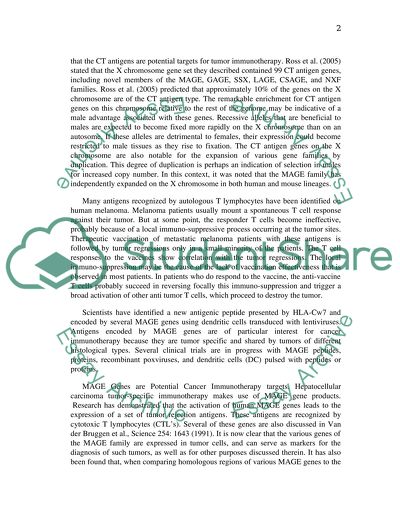Cite this document
(Melanoma-Associated Antigen Gene Assignment Example | Topics and Well Written Essays - 1500 words, n.d.)
Melanoma-Associated Antigen Gene Assignment Example | Topics and Well Written Essays - 1500 words. Retrieved from https://studentshare.org/biology/1505916-mage-genes
Melanoma-Associated Antigen Gene Assignment Example | Topics and Well Written Essays - 1500 words. Retrieved from https://studentshare.org/biology/1505916-mage-genes
(Melanoma-Associated Antigen Gene Assignment Example | Topics and Well Written Essays - 1500 Words)
Melanoma-Associated Antigen Gene Assignment Example | Topics and Well Written Essays - 1500 Words. https://studentshare.org/biology/1505916-mage-genes.
Melanoma-Associated Antigen Gene Assignment Example | Topics and Well Written Essays - 1500 Words. https://studentshare.org/biology/1505916-mage-genes.
“Melanoma-Associated Antigen Gene Assignment Example | Topics and Well Written Essays - 1500 Words”. https://studentshare.org/biology/1505916-mage-genes.


